A Combined Cycle Power Plant (CCPP) is a highly efficient type of electricity generation facility that combines two distinct thermodynamic cycles, namely the Brayton cycle and the Rankine cycle, to maximize energy conversion and overall efficiency. This innovative approach to power generation has become increasingly popular due to its ability to produce electricity with lower emissions and higher fuel efficiency compared to traditional power plants. In this comprehensive guide, we will explore every aspect of the Combined Cycle Power Plant in detail, covering its components, working principles, advantages, disadvantages, and more
What is a Combined Cycle Power Plant?
A Combined Cycle Power Plant (CCPP) is a type of power generation facility that utilizes a combination of two thermodynamic cycles to generate electricity efficiently. It incorporates a gas turbine cycle, known as the Brayton cycle, and a steam turbine cycle, known as the Rankine cycle, in a coordinated manner. This combination allows for the efficient utilization of high-temperature exhaust gases from the gas turbine to produce steam, which drives a steam turbine to generate additional electricity. CCPPs are renowned for their high thermal efficiency, which makes them an attractive choice for both baseload and peaking power generation.
A Combined cycle power plant is a highly efficient power generation unit. They are the cleanest and most efficient. The process of combined cycle power generation recovers the temperature from the exhaust gas and utilizes that heat in power generation. It is believed that they produce around 50 percent more electricity from the same fuel consumption. So combined cycle power plants are economical as compared the conventional ones.
Introduction of Combined Cycle Power Plant
The development of CCPPs can be traced back to the mid-20th century. The concept of combining gas and steam cycles to enhance power plant efficiency gained significant attention during the energy crisis of the 1970s. Early CCPPs were relatively small and used for specific industrial applications. However, advancements in gas turbine technology, materials, and control systems have made CCPPs more widely applicable for large-scale electricity generation. Today, they play a pivotal role in meeting the world’s increasing demand for electricity while addressing environmental concerns.
In a combined cycle power plant (Fig. 1), electricity is produced by two turbines; a gas turbine, and a steam turbine. The gas turbine is operated by the combustion products of the fuel (Brayton cycle), while the steam turbine (Rankine cycle) is operated by the steam generated by HRSG from the heat content of the exhaust gases leaving the gas turbine.
The name combined cycle power plant is provided because the gas turbine operates according to the Brayton cycle and the steam system operates according to the Rankine cycle. So, two cycles generate power combinedly. Fig. 1 below shows a schematic overview of a combined cycle power plant.
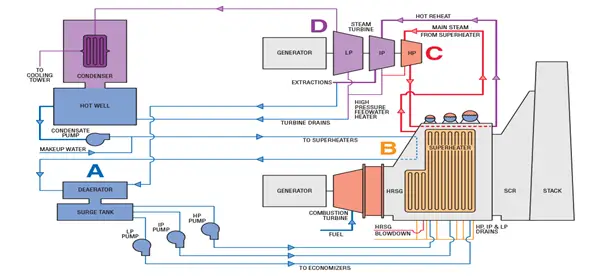
The gas turbine cycle works in the high-temperature region. Once the work is produced by the Brayton Cycle, the exhaust heat is routed to the nearby steam turbine for producing extra power by the Rankine cycle. Fig. 2 below shows both Brayton and Rankine Cycle.
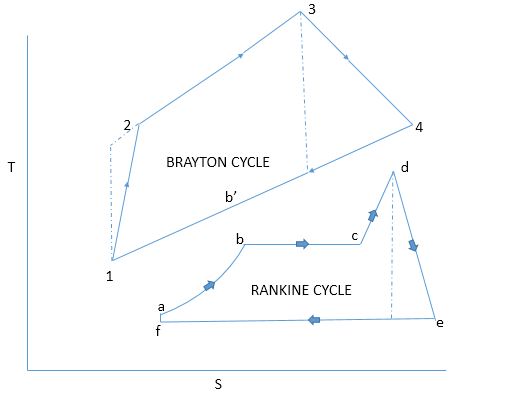
Components of a Combined Cycle Power Plant
The main components of a combined cycle power plant are
- a Gas Turbine (GT)
- an HRSG or heat recovery steam generator
- a Steam Turbine and
- other accessories or associated items.
Gas Turbine
A gas turbine in a combined cycle power plant converts natural gas or fluid into mechanical energy. A simple gas turbine has three sections: a compressor, a combustor, and a power turbine. It operates on the Brayton cycle principle. The working philosophy of gas turbines is simple. The compressed air is mixed with fuel and then burned under constant pressure. Then the hot gas flows through the turbine to produce work. Here’s how it works:
- Compression: Air from the atmosphere is drawn into the compressor, where it is compressed to a high pressure and temperature. This compressed air is then directed into the combustion chamber.
- Combustion: In the combustion chamber, fuel is injected and ignited, producing high-temperature, high-pressure exhaust gases. The combustion process releases a significant amount of thermal energy.
- Expansion: The hot exhaust gases flow through a turbine, causing it to spin. This spinning motion drives the gas turbine’s shaft, which is connected to a generator, thus converting the thermal energy into mechanical energy.
- Exhaust: After passing through the turbine, the exhaust gases exit the gas turbine at a lower pressure and temperature, typically at a velocity high enough to drive the compressor, creating a closed-loop cycle.
HRSG or Heat Recovery Steam Generator
The HRSG (Fig. 3) receives the exhaust gases from the Gas Turbine discharge. The exhaust gas, flowing in the counter-flow direction with respect to the steam/water coils, cools down by transferring heat to the steam/water. The flue gas temperature at the stack is about 110°C. Lower temperatures of 93°C can be used if the fuel gas is very clean and sulfur-free.
The HRSG is similar to a heat exchanger in which the shell side carries the flue gas and the tube side carries steam or water. It also has the characteristics of a boiler because there are steam drums, where the generated steam is separated from boiling water before entering the superheaters.
The HRSG can be horizontal or vertical, according to the direction of the flue gas path. The horizontal HRSGs are the most common. The vertical ones mainly are limited to installations where space is very tight.
HRSG Pressure and Temperature Levels
The HRSG can have one, two, or three pressure levels according to the size of the plant.
- For plant sizes of 200–400 MW, the pressure levels used are HP, IP, and LP.
- Plants down to 30–60 MW usually have two pressure levels (HP and LP),
- Smaller units only have one pressure level. Sometimes, with three pressure levels, the LP section produces the steam needed for deaeration only.
- The following tube banks are used for each pressure level (starting from the GT exhaust): 1) steam superheaters, 2) evaporator, and 3) economizer.
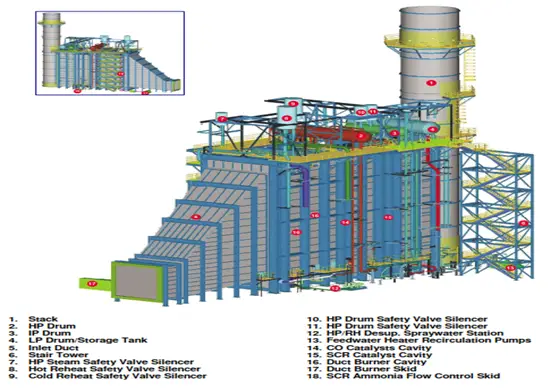
HRSG Design Features
Sometimes empty module is inserted in the flue gas ducts of large HRSGs where the flue gas temperature is 350–380°C, which can be used in the future for the installation of a selective catalytic reduction unit for further NOx abatement. Sometimes, a spool piece for the future addition of an oxidation catalyst for CO abatement is included for the same purpose as the SCR and located in the same position.
The pressure drop across the HRSG on the flue gas path is in the range of 200–375 mm water column. This pressure drop is the back-pressure of the GT and influences its generated power and efficiency by 1 and 2%, respectively. The HRSGs are provided with a set of motor-operated valves that are installed in the steam and water lines.
The feedwater inlet lines to the economizers are also provided with on/off shut-off valves. Having these shut-off valves allows the “bottling in” of the HRSG by closing all inlet and outlet lines, thereby keeping the boiler pressurized when the shut-down period is expected to be short. Additional motor-operated valves are used to remotely and automatically operate the drains in the superheaters.
The HRSG also includes a pressurized blow-down tank and an atmospheric blow-off tank and is also equipped with chemical injection pumps to maintain the water and steam chemistry specifications. The HRSG is also equipped with nitrogen connections for purging (dry lay-up) to prevent corrosion in case of long shut-down periods.
Steam Turbine
Steam turbines in a combined cycle power plant extract energy from the steam and convert it to work, which rotates the shaft of the turbine. The amount of energy that the steam turbine extracts from the steam depends on the enthalpy drop across the machine.
The enthalpy of the steam is a function of its temperature and pressure. As inlet and outlet temperature and pressure are known, one can use a Mollier diagram to determine the amount of energy available. Steam turbine (Fig. 4) sizes range from a few kilowatts to over 1000 megawatts.
Operating Control Modes of Steam Turbine
Steam Turbine operates in three control modes:
- Fixed pressure mode– Below 50% load, which corresponds to about 50% of the live steam pressure, the steam turbine will be operated in a fixed pressure mode. In this mode of operation, pressure from the steam generator remains constant and is controlled by the main control In case the steam turbine is not taking all produced steam, the pressure of the steam generator is controlled by the bypass valves.
- Sliding pressure mode– When the 50% load is reached the main control valve is fully open. With increasing gas turbine loads the steam turbine will be operated in sliding pressure mode. In this case, the live steam pressure varies proportionally with the steam flow.
- Load control– when the generator is synchronized to the grid, its frequency is governed by the grid. The turbine controller maintains the baseload by adjusting the steam flow.
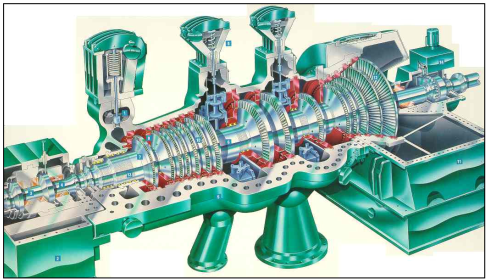
Other Accessories of Combined Cycle Power Plant
Air Cooled Condenser
The air-cooled steam condenser (ACC-Fig. 5) condenses the turbine exhaust steam or the de-superheated steam from the turbine bypass. The condensate collected in the steam/condensate headers drains under gravity to the condensate tank, from where it is pumped by the condensate extraction pumps to the boiler system on level control.
The turbine back pressure is controlled by fans using pressure transmitters on the ST exhaust. Pressure transmitters protect the ACC in case of overpressure. The control system modulates a number of fans into operation and fan speed and steam isolating valve position to meet the back pressure set point.
Temperature transmitters in the main steam duct protect the condenser against overheating.
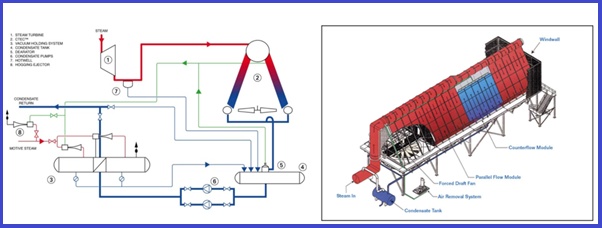
Types of Condensing Systems
The selection of the condensing system for a combined cycle power plant varies based on environmental conditions. They are classified into the following categories:
- Water-cooled surface condensers and wet condensing system
- Air-cooled condensers
- Alternative condensing systems
Air Extraction System
- The non–condensable has to be evacuated from the condenser before steam can be introduced at start-up (hogging process) and should be continuously removed during normal operation (holding process)
- HOGGING PROCESS – For the hogging process, the requirements are to lower the pressure as quickly as possible from the atmospheric pressure (946 mbar(a)) to 250 mbar(a) ) within 30 minutes.
- HOLDING PROCESS – Once the vacuum is established and during normal operation, the hogging extraction skid is shut down and only one holding vacuum set continuously removes the non-condensable.
Bypass Stack and Diverter
In some instances, when electric power generation is a must, it should be possible to run the gas turbine in an open cycle and exhaust the flue gas into the atmosphere instead of sending it to the HRSG, regardless of the overall efficiency. This requires a bypass stack and a diverter that closes the path to the HRSG and opens it to the atmosphere through the bypass stack.
The diverter is connected to the GT exhaust duct before the diverging cone of the HRSG, and this implies that the GT has to meet the plant emissions limits, as any SCR in the HRSG is also bypassed. Throttling by the diverter could also be used to control steam generation in the HRSG. This configuration is rare.
The most important characteristic of a well-designed diverter is its ability to completely switch the flue gas from the bypass stack to HRSG, under all operating conditions.
Auxiliary Systems of Combined Cycle Power Plant
Boiler Feed Water Pump:
The LP drum can be used to feed the boiler feedwater (BFW) pumps on level control as explained in the three elements control system. If there are HP and IP sections, the BFW pumps can be multiple-stage centrifugal pumps with an intermediate discharge for the IP section. Automatic minimum flow bypass, a Three-way Yarway valve, on the HP discharge nozzle of the pump, is used for minimum flow protection.
Bypass System:
The superheated steam to the steam turbine is bypassed to the condenser during the start-up, ST shutdown, and load rejection. The bypass arrangement includes
- HP bypass from the HP header to IP header (cold reheat side if reheating is implemented)
- IP bypass from the IP header (hot reheat side if reheating is implemented) to the condenser.
- LP by-pass from the LP header to the condenser.
Each bypass requires a pressure reduction and desuperheating with boiler feedwater or condensate to meet downstream condenser conditions.
Blow Down Tank:
To keep the required steam purity, a small percentage (1–3%) of the water in the steam drums is discharged to continuous blow-down.
For large boilers, there is a pressure blow-down tank into which the HP and IP steam drums drain. In addition, an atmospheric blow-off tank is also provided to receive the water from the blow-down tank plus the drains from the LP drum and the blow-off from the HP and IP drums.
Demineralization Plant:
The water needed for filling the HRSG and as make-up water during normal operation is generated in a demineralization plant. The demineralization plant is usually controlled by its own PLC, which is interfaced with the DCS, but sometimes is controlled directly by the plant DCS system.
The demineralized water is stored in a tank that should be sized sufficiently large to provide water in case of disruption in production. It should also store enough water to supply the quantity needed for pipe blowing in the pre-commissioning stage, without the need for waiting for the production of new water. This consideration can be the basis for sizing the demineralized water storage tank
Closed Circuit Cooling Water:
If an air condenser is used, the closed-circuit cooling water system becomes much smaller, because the amount of water needed in the rest of the plant is a relatively small percentage of that needed for the water condenser. The users of the CCCW are turbine generators, condensate and feed water pumps, sampling systems, etc.
Other auxiliary components of a gas turbine can be
- Gear Box
- Intercooler heat exchanger
- regeneration heat exchanger
- supplementary firing system
Start-up philosophy of Combined Cycle power generation plants
The main concern in starting a combined cycle power plant is to avoid thermal stresses to the machines that would shorten their life and produce unsafe conditions. This consideration extends the time for start-up, while economics require that start-up take place in the minimum possible time and with minimum fuel consumption.
Each manufacturer of the main plant equipment sets the requirements for its machine. The process design engineers shall combine these requirements with their own to arrive at start-up procedures that will minimize the overall start-up time.
The gas turbine is the fastest starting component in a combined cycle power plant. It takes about less than 10 min to get to the synchronized speed.
HRSG of the combined cycle power plant has thermal inertia and rapid heating may result in high thermal stresses which would affect the life of the HRSG. In HRSG, the HP steam drum is most vulnerable to the build-up of thermal stresses if heating is done rapidly. To avoid this possibility the drum is heated in a controlled manner. The magnitude of the thermal stress development depends on the temperature difference which in turn depends on the material, operating pressure, and thickness of the material.
The temperature difference can be effectively controlled by controlling the pressure inside the drum. If a certain temperature difference is close to the design limit it can be controlled at that level by holding the pressure constant. This is indicated by the constant pressure/temperature line.
The heat input is controlled by operating the GT at a reduced load. A gas-side bypass system, which diverts part of the hot GT gasses to the atmosphere is also used to control the heat input to the boiler.
HRSG start-up without gas bypass damper:
The GT and the HRSG of a combined cycle power plant are connected directly without a bypass damper if the power production is to be maximized and there is no requirement for simple cycle operation. It is possible under certain circumstances to run the HRSG ‘dry’ or produce no steam while the GT is operating. Usually, this requires additional constraints in the design and limitations of GT exhaust temperature.
HRSG start-up with gas bypass damper:
The damper can control the gas flow to the HRSG, part of the gas at operating temperature passes through the HRSG. Thus the amount of steam production and the drum pressure can be maintained at the required level by allowing the required amount of gas through the HRSG
Most of the damper systems have limited turndown capability. Therefore venting or bypassing the steam is still needed, though the capacity and time required may be less. The bypass damper must be utilized when there is a need to run the plant in a simple cycle.
The heating of IP and LP drums and the steam production in these drums is not of much concern because they are operated at low pressures and have low capacities.
Steam turbine warm-up:
The steam turbine of a combined cycle power plant has the most mass and has components with much thicker cross-sections. Therefore, it needs the longest warming uptime. Warm-up generally takes three to five hours. Since the Steam Turbine start-up takes longer, the HRSG needs to be maintained at the low load operation for a much longer time if the steam is supplied for warm-up.
Various combinations of start-up scenarios are feasible for a power plant. These are mainly determined by the temperature of each of the components at the start-up time. For instance
- a ‘cold’ state means that the component is at room temperature, having been down for a considerable time, usually days.
- A ‘warm’ start results when the unit is down for a few hours and most of the heat is not lost.
- A ‘hot’ start occurs when the unit is shut off for a very short period of time after operating for a considerable time at full load.
Fuel for Combined Cycle Power Plant
Combines cycle power plants can be fuelled using the following:
- Natural gas
- Crude oil
- Bunker fuel
- Distillate and
- Residual oil
However, Fueling with crude or residual oil calls for extra capital spending for fuel treatment equipment. Also, the operation suffers due to additional operating costs for additives to counteract contaminants present. The type of fuel and mode of operation decide the maintenance intervals and the amount of maintenance work required.
Advantages of Combined Cycle Power Plant
The major advantages of a combined cycle power plant are:
- Increases overall plant efficiency: plant efficiency increases by 50% or more
- Reduced investment cost: Investment cost is reduced by 30% as compared to a conventional steam power plant.
- Reduced water requirement.
- Phased installation is possible.
- Fully Automatic Operation, so less staff is required.
- Lower environmental impact.
- Highly reliable and Flexible
- Can start up and shut down quickly.
- Lower maintenance and installation costs.
- The lowest global warming effect
- Lower construction time.
Disadvantages of Combined Cycle Power Plant
Some disadvantages of a combined cycle power plant are:
- Technologies are complex and expensive which increases the initial investment.
- The efficiency of part-load demand is poor.
- To operate at high temperatures and pressure, special metals are required.
- Limited fuel switching capability.
Applications and Types of Combined Cycle Power Plants
Base Load and Peaking Plants:
CCPPs can serve as base load power plants, providing a steady and reliable source of electricity, or as peaking plants, responding to periods of high electricity demand. The flexibility of CCPPs allows them to adapt to different operational roles based on grid requirements.
Single-Shaft and Multi-Shaft Configurations:
CCPPs can be designed with single-shaft or multi-shaft configurations. In a single-shaft design, both the gas turbine and steam turbine share a common shaft and generator. In a multi-shaft configuration, separate generators are used for the gas and steam turbines, providing greater operational flexibility and control.
Cogeneration and Combined Heat and Power (CHP):
Some CCPPs are configured for cogeneration or combined heat and power (CHP) applications. In these setups, the waste heat from the HRSG is not only used to drive a steam turbine but also for industrial processes or district heating, maximizing overall energy efficiency.
Future Developments and Innovations
Advanced Gas Turbine Technologies:
Ongoing research and development efforts are focused on improving the efficiency and performance of gas turbines used in CCPPs. This includes advancements in materials, aerodynamics, and combustion technology.
Integration with Renewable Energy:
CCPPs can be integrated with renewable energy sources, such as solar and wind, to provide a more reliable and stable electricity supply. This combination of fossil fuel-based and renewable energy helps mitigate the intermittency of renewables.
Hybrid and Integrated Energy Systems:
CCPPs are increasingly being incorporated into hybrid and integrated energy systems that combine various energy sources and technologies, including energy storage and grid management solutions. These systems aim to enhance grid resilience and optimize energy generation.

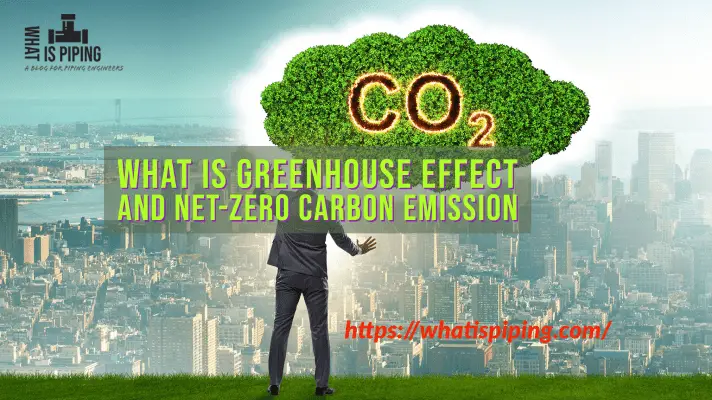

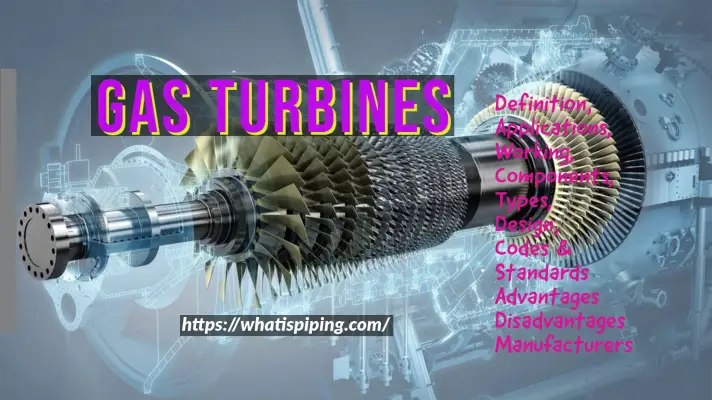
![START-PROF Piping Stress Video Training Series [In-Depth] a1](https://whatispiping.com/wp-content/uploads/2019/02/a1.png)
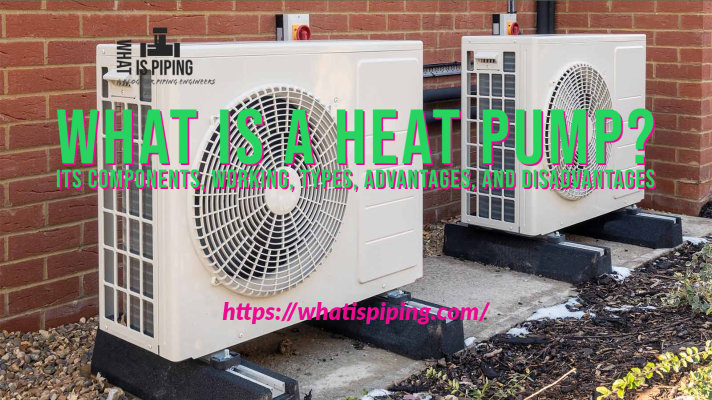
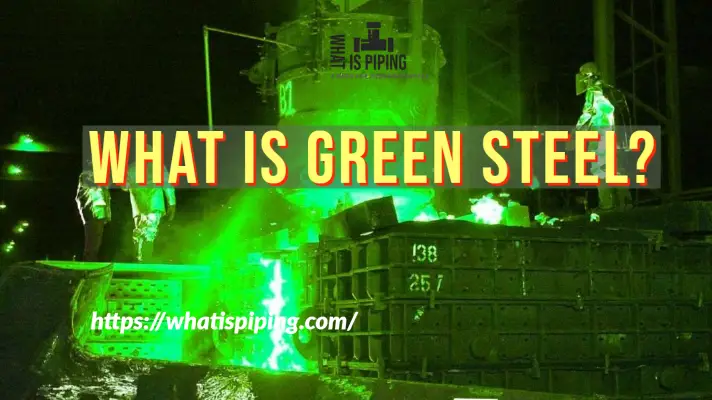
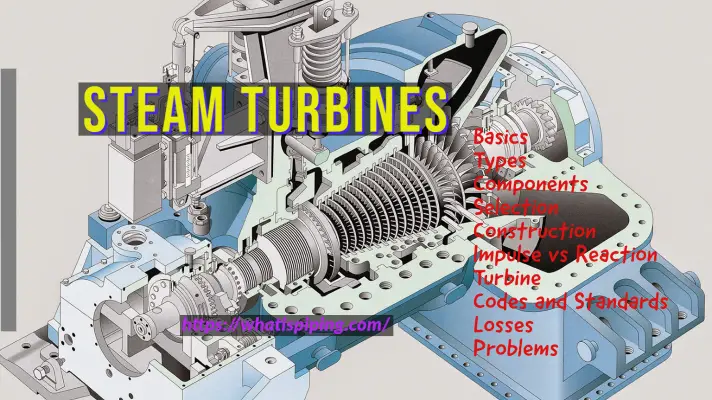
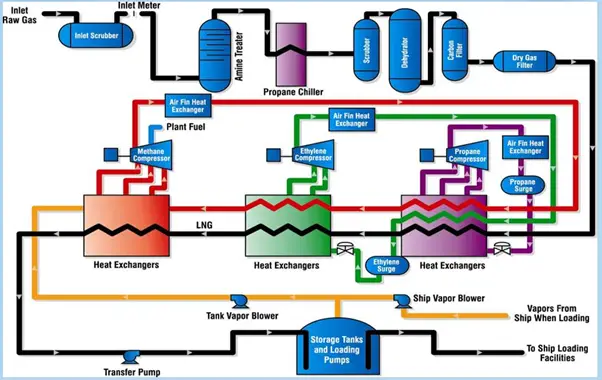
Regards
Wonderful write up and full of knowledge. Can you please share PDF and HAZOP report on CCPP if have any. Regards
Thank you for sharing the many benefits of exhaust silencers in power plants. I never knew that the silencers are used to ensure the power plant is operating efficiently. This is an interesting point and I can start a conversation with others.
Thanks for explaining-
Components of a Combined Cycle Power Generation System,
Three control modes of the Steam turbine operation,
Condensing system based on environmental conditions, etc.
Liked your writing skill too!
Hello Sir,
Could you please send the above document in pdf if possible.
mimoune.fouad@hotmail.fr
Warm Regards,
Fouad,
I Found it;
Thanks For information Sir,
Regards,
Огромное спасибо.
Все написано очень доходчиво и понятно.
Успехов Вам.
Could you please provide HAZOP report of any CCPP. I shall be thankful.
Good job. My company operates three 500 mw combined cycle units, three smaller, older cc units, and several quick start gas turbines. It also operates a 3-unit, 4000 mw nuclear plant and coal units that are being phased out. I often find myself explaining combined cycle operation to others.
Thank and appreciate your efforts to explain the principles of combined cycle and as some followers suggest if possible explain about HAZOP .